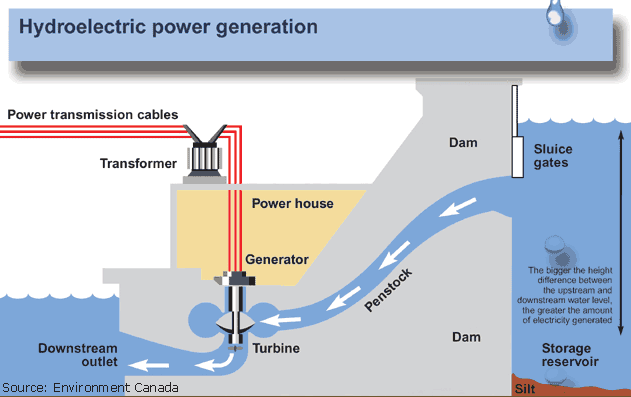In today’s world where the need for clean and sustainable energy sources is at an all-time high, hydropower stands out as one of the most reliable and efficient options. Harnessing the power of water to generate electricity, hydropower has been a key player in the renewable energy sector for decades. Let’s take a closer look at how this clean energy source works and why it’s a crucial component of our energy future.
How Hydropower Works
Hydropower plants utilize the energy of flowing water to turn turbines, which then generate electricity. This process is known as hydroelectric power generation and can be implemented in various ways, including dams, run-of-the-river systems, and pumped storage facilities.
At a dam, water is collected in a reservoir, and the force of gravity causes it to fall through penstocks, spinning turbines as it descends. This spinning motion is converted into electrical energy through a generator, producing clean electricity that can be transmitted through power lines to homes and businesses.
The Benefits of Hydropower
There are numerous advantages to using hydropower as an energy source. Firstly, it is a renewable resource, meaning that the water cycle continuously replenishes the water used for power generation. This makes hydropower a sustainable and environmentally friendly option for meeting our energy needs.
Additionally, hydropower is a clean energy source that produces minimal greenhouse gas emissions compared to fossil fuel-based power plants. By reducing our reliance on coal and oil, we can significantly lower our carbon footprint and mitigate the impacts of climate change.
Furthermore, hydropower is a reliable and flexible energy source that can be easily ramped up or down to meet fluctuating energy demands. This makes it an excellent complement to other renewable energy sources like solar and wind, which can be intermittent in nature.
The Future of Hydropower
As we strive to transition to a more sustainable energy future, hydropower will play a crucial role in helping us achieve our goals. With technological advancements and innovation in the sector, we can further optimize the efficiency and environmental sustainability of hydropower plants.
One exciting development in the field of hydropower is the integration of smart grid technology, which allows for better coordination and management of energy production and consumption. This ensures that hydropower plants can adapt to changing energy demands and maximize their output while minimizing waste.
Furthermore, research is being conducted to explore new ways of utilizing hydropower, such as small-scale hydroelectric systems and underwater turbines. These innovative solutions have the potential to expand the reach of hydropower and make it even more accessible to communities around the world.
Conclusion
Hydropower is a valuable and sustainable energy source that has the potential to power our planet for generations to come. By harnessing the power of water, we can reduce our reliance on fossil fuels, lower our carbon emissions, and create a cleaner and healthier future for all. As we continue to invest in renewable energy solutions, hydropower will undoubtedly remain at the forefront of our efforts to combat climate change and build a more sustainable world.
Embrace the power of water and join the movement towards a brighter, cleaner tomorrow with hydropower.

